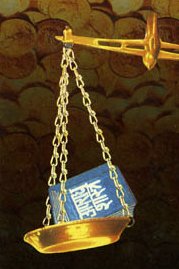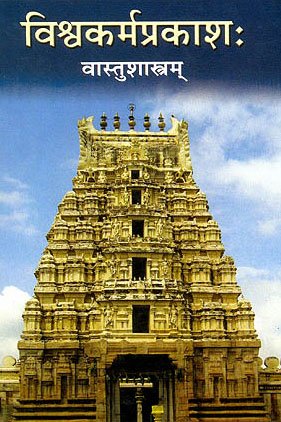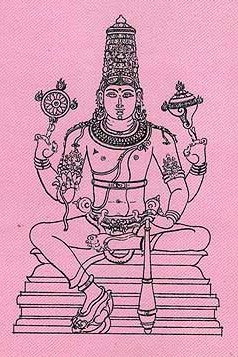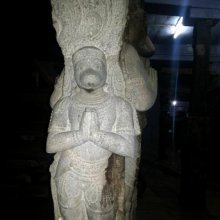Putra: 24 definitions
Introduction:
Putra means something in Buddhism, Pali, Hinduism, Sanskrit, Jainism, Prakrit, the history of ancient India, Marathi, Hindi. If you want to know the exact meaning, history, etymology or English translation of this term then check out the descriptions on this page. Add your comment or reference to a book if you want to contribute to this summary article.
Images (photo gallery)
In Hinduism
Purana and Itihasa (epic history)
Source: archive.org: Shiva Purana - English Translation1) Putra (पुत्र) refers to “sons”, mentioned as one of the potential rewards of Śiva-worship, according to the Śivapurāṇa 2.1.12:—“[...] those who desire magnificent buildings, beautiful ornaments, beautiful women, wealth to satiety, sons and grandsons (putra-pautra), health, splendid body, extraordinary status, heavenly happiness and final salvation or profound devotion to the great lord shall duly worship Śiva by virtue of their merit accumulated by them. Sure success will be his who regularly worships Śiva liṅga with great devotion. He will never be afflicted by sins”.
2) Putra (पुत्र) refers to “sons”, which is mentioned as obtainable through the worship of Śiva, according to the Śivapurāṇa 2.1.14:—“[...] a person desirous of long life shall worship him with Dūrvā grass. A person desirous of sons (putra-kāma) shall worship him with Dhattūra flowers. A Dhattūra plant with red stem is specially auspicious for worship. A worshipper using Agastya flowers will earn great fame”.
Source: Cologne Digital Sanskrit Dictionaries: The Purana Index1a) Putra (पुत्र).—One of the seven sons of Vasiṣṭha*
- * Vāyu-purāṇa 28. 36.
1b) A son of Svāyambhuva Manu.*
- * Vāyu-purāṇa 31. 18.
1c) A son of Priyavrata given to yoga: had no inclination for ruling the kingdom.*
- * Viṣṇu-purāṇa II. 1. 7-9.

The Purana (पुराण, purāṇas) refers to Sanskrit literature preserving ancient India’s vast cultural history, including historical legends, religious ceremonies, various arts and sciences. The eighteen mahapuranas total over 400,000 shlokas (metrical couplets) and date to at least several centuries BCE.
Jyotisha (astronomy and astrology)
Source: Wisdom Library: Brihat Samhita by VarahamihiraPutra (पुत्र) refers to a “son” (i.e., of the king), according to the Bṛhatsaṃhitā (chapter 3), an encyclopedic Sanskrit work written by Varāhamihira mainly focusing on the science of ancient Indian astronomy astronomy (Jyotiṣa).—Accordingly, “If, when the rays are turned away from the earth the colour of the sun be that of copper the commander-in-chief [i.e., senāpati] dies; if it be green or yellow the king’s son [i.e., narendra-putra] dies; if it be white the royal chaplain dies. If the sun (āditya) be variegated in colour or of the colour of smoke there will be either immediate rain or mankind will suffer from robbers and from weapons”.

Jyotisha (ज्योतिष, jyotiṣa or jyotish) refers to ‘astronomy’ or “Vedic astrology” and represents the fifth of the six Vedangas (additional sciences to be studied along with the Vedas). Jyotisha concerns itself with the study and prediction of the movements of celestial bodies, in order to calculate the auspicious time for rituals and ceremonies.
Arthashastra (politics and welfare)
Source: Brill: Śaivism and the Tantric Traditions (artha)Putra (पुत्र) refers to “one’s son”, according to the Arthaśāstra verse 1.9.9-10.—Accordingly, “He should appoint as chaplain a man who comes from a very distinguished family and has an equally distinguished character, who is thoroughly trained in the Veda together with the limbs, in divine omens, and in government, and who could counteract divine and human adversities through Atharvan means. He should follow him as a pupil his teacher, a son (putra) his father, and a servant his master”.

Arthashastra (अर्थशास्त्र, arthaśāstra) literature concerns itself with the teachings (shastra) of economic prosperity (artha) statecraft, politics and military tactics. The term arthashastra refers to both the name of these scientific teachings, as well as the name of a Sanskrit work included in such literature. This book was written (3rd century BCE) by by Kautilya, who flourished in the 4th century BCE.
Shaktism (Shakta philosophy)
Source: Brill: Śaivism and the Tantric Traditions (shaktism)Putra (पुत्र) refers to the “son”, according to Sāhib Kaul’s Śārikāstrotra.—Accordingly, “[...] My devotion to you nourishes me every day, as the rise of the full moon always nourishes the ocean. On account of the true affluence of victorious devotion to you I even ignore the excellent Lakṣmī. The whole world consists of you, Goddess of Gods! Your body is consciousness, you are alone and perfectly established. Nowhere is there ignorance. Thus, where do we see the son of a barren woman (vandhyā-putra) run and raise his bow? [...]”.

Shakta (शाक्त, śākta) or Shaktism (śāktism) represents a tradition of Hinduism where the Goddess (Devi) is revered and worshipped. Shakta literature includes a range of scriptures, including various Agamas and Tantras, although its roots may be traced back to the Vedas.
Vastushastra (architecture)
Source: Brill: Śaivism and the Tantric Traditions (architecture)Putra (पुत्र) refers to a “son”, according to the Devyāmata (chapter 105).—Accordingly, [while describing the consequences of a doorway]—“[...] Those facing north are listed next, in sequence, from the northwest on. At Roga is bondage. At Nāga (Vāsuki) is an enemy. At Mukhya is an increase in sons and wealth. At Bhalvāṭa is gain. At Soma is a gain in wealth. At Anantaka is heroism in sons (putra-vaira). [...]

Vastushastra (वास्तुशास्त्र, vāstuśāstra) refers to the ancient Indian science (shastra) of architecture (vastu), dealing with topics such architecture, sculpture, town-building, fort building and various other constructions. Vastu also deals with the philosophy of the architectural relation with the cosmic universe.
Pancaratra (worship of Nārāyaṇa)
Source: University of Vienna: Sudarśana's Worship at the Royal Court According to the AhirbudhnyasaṃhitāPutra (पुत्र) refers to a “son”, according to the Ahirbudhnyasaṃhitā, belonging to the Pāñcarātra tradition which deals with theology, rituals, iconography, narrative mythology and others.—Accordingly, “[...] If the female Demon born of the enemy’s aggressive ritual takes possession of the King, the latter would die on the spot just after having seen her, there is no doubt about that. [The King’s] sons, ministers (putra—putrāṃśca mantriṇaścāpi), chief Queen as well as the city itself, the Demoness, clad in a garland of flames, destroys everything in just a second”.

Pancaratra (पाञ्चरात्र, pāñcarātra) represents a tradition of Hinduism where Narayana is revered and worshipped. Closeley related to Vaishnavism, the Pancaratra literature includes various Agamas and tantras incorporating many Vaishnava philosophies.
In Buddhism
Tibetan Buddhism (Vajrayana or tantric Buddhism)
Source: academia.edu: The Structure and Meanings of the Heruka MaṇḍalaPutra (पुत्र) is the name of a Vīra (hero) who, together with the Ḍākinī named Putrī forms one of the 36 pairs situated in the Agnicakra, according to the 10th century Ḍākārṇava chapter 15. Accordingly, the agnicakra refers to one of the three divisions of the saṃbhoga-puṭa (‘enjoyment layer’), situated in the Herukamaṇḍala. The 36 pairs of Ḍākinīs and Vīras [viz., Putra] are red in color; they each have one face and four arms; they hold a skull bowl, a skull staff, a small drum, and a knife.
Source: OSU Press: Cakrasamvara SamadhiPutra (पुत्र) and Putrī refers to “children” [i.e., dhyeyasya bhartṛ-bhartrī putra-putrī], according to the Guru Mandala Worship (maṇḍalārcana) ritual often performed in combination with the Cakrasaṃvara Samādhi, which refers to the primary pūjā and sādhanā practice of Newah Mahāyāna-Vajrayāna Buddhists in Nepal.

Tibetan Buddhism includes schools such as Nyingma, Kadampa, Kagyu and Gelug. Their primary canon of literature is divided in two broad categories: The Kangyur, which consists of Buddha’s words, and the Tengyur, which includes commentaries from various sources. Esotericism and tantra techniques (vajrayāna) are collected indepently.
Mahayana (major branch of Buddhism)
Source: De Gruyter: A Buddhist Ritual Manual on AgriculturePutra (पुत्र) refers to “children”, according to the Vajratuṇḍasamayakalparāja, an ancient Buddhist ritual manual on agriculture from the 5th-century (or earlier), containing various instructions for the Sangha to provide agriculture-related services to laypeople including rain-making, weather control and crop protection.—Accordingly [as the Nāga kings said to the Bhagavān], “[...] Our bodies crumble to small pieces until the skeleton remains. Then, O Bhagavān, we all release rain showers quickly and speedily. If we do not release rain showers rapidly, then, O Bhagavān, all [of us] shall be subject to death. We will die with our children and grand-children (sa-putra-pautra)”.

Mahayana (महायान, mahāyāna) is a major branch of Buddhism focusing on the path of a Bodhisattva (spiritual aspirants/ enlightened beings). Extant literature is vast and primarely composed in the Sanskrit language. There are many sūtras of which some of the earliest are the various Prajñāpāramitā sūtras.
In Jainism
General definition (in Jainism)
Source: The University of Sydney: A study of the Twelve Reflections1) Putra (पुत्र) refers to “children”, according to the 11th century Jñānārṇava, a treatise on Jain Yoga in roughly 2200 Sanskrit verses composed by Śubhacandra.—Accordingly, “If children, wives, wealth, relations (putra—putrastrīdhanabāndhavāḥ) [and] bodies will inevitably go away, then why is one distressed uselessly for the sake of them?”.
2) Putra (पुत्र) refers to the “son”, according to the Jñānārṇava.—Accordingly, “Here [in the cycle of rebirth] a king becomes an insect and an insect becomes the chief of the gods. An embodied soul might wander about, tricked by [their] karma without being able to help it. For corporeal [souls] the mother becomes the daughter, the sister, even the wife. The father, moreover, becomes the son (putra) and he obtains the paternal home”.

Jainism is an Indian religion of Dharma whose doctrine revolves around harmlessness (ahimsa) towards every living being. The two major branches (Digambara and Svetambara) of Jainism stimulate self-control (or, shramana, ‘self-reliance’) and spiritual development through a path of peace for the soul to progess to the ultimate goal.
India history and geography
Source: Cologne Digital Sanskrit Dictionaries: Indian Epigraphical GlossaryPutra.—cf. Nigama-putra (LL), ‘the inhabitant of a nigama (township).’ Cf. Durgā-putra, Puruṣottama-putra, etc. (IE 7-1-2), probably confused with pāṇḍu-putra and used to indicate ‘five’. Note: putra is defined in the “Indian epigraphical glossary” as it can be found on ancient inscriptions commonly written in Sanskrit, Prakrit or Dravidian languages.

The history of India traces the identification of countries, villages, towns and other regions of India, as well as mythology, zoology, royal dynasties, rulers, tribes, local festivities and traditions and regional languages. Ancient India enjoyed religious freedom and encourages the path of Dharma, a concept common to Buddhism, Hinduism, and Jainism.
Languages of India and abroad
Marathi-English dictionary
Source: DDSA: The Molesworth Marathi and English Dictionaryputra (पुत्र).—m (S) A son. Pr. sōḷā varṣēṃ putra maga mitra Until the sixteenth year, treat your son as a boy or subject youth; after that regard him as a friend. 2 In Hindu law twelve kinds of Son are enumerated. See dvādaśavidhaputra. putramukha pāhaṇēṃ To inspect the visage and features of a newborn child whilst reciting a mantra.
Source: DDSA: The Aryabhusan school dictionary, Marathi-Englishputra (पुत्र).—m A son.
Marathi is an Indo-European language having over 70 million native speakers people in (predominantly) Maharashtra India. Marathi, like many other Indo-Aryan languages, evolved from early forms of Prakrit, which itself is a subset of Sanskrit, one of the most ancient languages of the world.
Sanskrit dictionary
Source: DDSA: The practical Sanskrit-English dictionaryPutra (पुत्र).—
1) A son; (the word is thus derived:-punnāmno narakād yasmāt trāyate pitaraṃ sutaḥ | tasmāt putra iti proktaḥ svayameva svayaṃbhuvā || Manusmṛti 9.138; the word, therefore, should be strictly written puttraḥ).
2) A child, young one of an animal.
3) A dear child (a term of endearment in addressing young persons).
4) (At the end of comp.) Anything little or small of its kind; as in असिपुत्रः, शिलापुत्रः (asiputraḥ, śilāputraḥ) &c.
5) (Astrol.) The fifth mansion from जन्मलग्न (janmalagna).
-trau (du.) A son and daughter.
Derivable forms: putraḥ (पुत्रः).
Source: Cologne Digital Sanskrit Dictionaries: Shabda-Sagara Sanskrit-English DictionaryPutra (पुत्र) or Puttra.—m.
(-ttraḥ) 1. A son. 2. A child, in the language of the Vedas. 3. The fifth mansion from the point of conjunction of the sun, and a zodiacal sign. f. (-ttrī) A daughter. du. always, (-ttrī) Son and daughter. E. put, and trā to preserve, the hell, (from,) aff. ka; or pūj to purify, aff. ttra; one ta may be rejected in writing this word, and its derivatives, leaving putra. The word is thus derived by Manu. viz:— “punnāmno narakādyasmāt pitaraṃ trāyate sutaḥ . tasmātputra iti proktaḥ khayameva svayaṃbhūvā ..”
Source: Cologne Digital Sanskrit Dictionaries: Benfey Sanskrit-English DictionaryPutra (पुत्र).—perhaps pū + tra, I. m. 1. A son, [Mānavadharmaśāstra] 9, 138. 2. du. Two sons. 3. A son and a daughter, [Nala] 23, 26. 4. pl. Children, young ones, Mahābhārata 12, 3306. Ii. f. trī, A daughter, [Pañcatantra] 190, 1.
Source: Cologne Digital Sanskrit Dictionaries: Cappeller Sanskrit-English DictionaryPutra (पुत्र).—[masculine] son, child, the young of an animal; [feminine] ī daughter.
Source: Cologne Digital Sanskrit Dictionaries: Monier-Williams Sanskrit-English Dictionary1) Putra (पुत्र):—m. ([etymology] doubtful, perhaps [from] √2. puṣ; traditionally said to be a [compound] put-tra, ‘preserving from the hell called Put’ [Manu-smṛti ix, 138]) a son, child, [Ṛg-veda] etc. etc. (also the young of an animal; cf. [Pāṇini 8-1, 15 [Scholiast or Commentator]]; ifc. it forms diminutives cf. dṛṣat-p and śilā-p; [vocative case] sg. [dual number] [plural] often used to address young persons, ‘my son, my children etc.’; [dual number] ‘two sons’ or, ‘a son and a daughter’; cf. [Pāṇini 1-2, 68])
2) a species of small venomous animal (= putraka), [Catalogue(s)]
3) (in [astrology]) Name of the fifth house, [Varāha-mihira]
4) Name of a son of Brahmiṣṭha, [Raghuvaṃśa]
5) of a son of Priya-vrata, [Viṣṇu-purāṇa] etc. etc.
6) mfn. ifc. used to form diminutives (See asi-putrī)
7) a species of plant, [cf. Lexicographers, esp. such as amarasiṃha, halāyudha, hemacandra, etc.]; Name of Pārvati, [cf. Lexicographers, esp. such as amarasiṃha, halāyudha, hemacandra, etc.]
8) cf. [Zend] puthra; [Greek] παῖς and [Latin] puer (?).
Source: DDSA: Paia-sadda-mahannavo; a comprehensive Prakrit Hindi dictionary (S)Putra (पुत्र) in the Sanskrit language is related to the Prakrit words: Putta, Puttullaṃ, Poṭṭa.
[Sanskrit to German]
Sanskrit, also spelled संस्कृतम् (saṃskṛtam), is an ancient language of India commonly seen as the grandmother of the Indo-European language family (even English!). Closely allied with Prakrit and Pali, Sanskrit is more exhaustive in both grammar and terms and has the most extensive collection of literature in the world, greatly surpassing its sister-languages Greek and Latin.
Hindi dictionary
Source: DDSA: A practical Hindi-English dictionaryPutra (पुत्र):—(nm) a son; ~[tulya] just like a son, -[pautra] sons and grandsons; ~[lābha] begetting a son, ~[vatī] a woman blessed with a son or sons; ~[vat] just like a son; ~[vadhū] son’s wife, daughter-in law; ~[hīna] sonless, without a son; ~[hīnā] (a woman) without a son, sonless.
...
Kannada-English dictionary
Source: Alar: Kannada-English corpusPutra (ಪುತ್ರ):—
1) [noun] a boy or man as related to his parents; a son.
2) [noun] a young of an animal.
3) [noun] a term of endearment used to address a young boy (who may not be one’s son).
4) [noun] (astrol.) the fifth house from one’s birth house in the zodiac.
Kannada is a Dravidian language (as opposed to the Indo-European language family) mainly spoken in the southwestern region of India.
See also (Relevant definitions)
Starts with (+158): Putra-juvi, Putra-pautra-ady-anvay-opabhoga, Putra-pautra-anugamaka, Putra-pautra-anvaya-krama-upabhogya, Putra-pautradi-santati-kramena, Putra-sunu, Putra-zuvvi, Putrabhadra, Putrabhaga, Putrabhanda, Putrabhava, Putrabhuya, Putracarya, Putracharya, Putrachinta, Putracinta, Putrada, Putrada paushi shukla, Putradara, Putradarshanaparva.
Ends with (+405): Abdhiputra, Achyutaputra, Acyutaputra, Agniputra, Agraputra, Ajaputra, Akritiputra, Alambayaniputra, Alambiputra, Amaputra, Amataputra, Ambarishaputra, Ambikaputra, Amlaputra, Amushyaputra, Annikaputra, Aparapataliputra, Apatiputra, Apaviddhaputra, Aputra.
Full-text (+1004): Potta, Shilaputra, Kadruputra, Aputra, Dattaka, Putri, Kuputra, Putrapriya, Kritaka, Kritha, Putrikaputra, Putramjiva, Shaliputra, Putrata, Gangaputra, Putrapravara, Putrasu, Gauriputra, Gaviputra, Nishputra.
Relevant text
Search found 108 books and stories containing Putra; (plurals include: Putras). You can also click to the full overview containing English textual excerpts. Below are direct links for the most relevant articles:
Garga Samhita (English) (by Danavir Goswami)
Verse 4.9.6 < [Chapter 9 - The Glories of Srī Ekādaśī]
Verse 6.14.22 < [Chapter 14 - The Glories of Ratnākara, Raivata, and Kācala]
Verse 6.3.4 < [Chapter 3 - Lord Balarāma’s Wedding]
Brihad Bhagavatamrita (commentary) (by Śrī Śrīmad Bhaktivedānta Nārāyana Gosvāmī Mahārāja)
Verse 2.3.107 < [Chapter 3 - Bhajana (loving service)]
Verse 1.2.92 < [Chapter 2 - Divya (the celestial plane)]
Verse 2.2.128 < [Chapter 2 - Jñāna (knowledge)]
Rig Veda (translation and commentary) (by H. H. Wilson)
Women in the Atharva-veda Samhita (by Pranab Jyoti Kalita)
5b. Hymns to Obtain a Son < [Chapter 2 - The Strīkarmāṇi Hymns of the Atharvaveda]
1. Woman in the Family and as a Daughter < [Chapter 3 - The Familial and Social Life of Women in the Atharvaveda]
5f. Hymn for Easy Parturition < [Chapter 2 - The Strīkarmāṇi Hymns of the Atharvaveda]
Yajnavalkya-smriti (Vyavaharadhyaya)—Critical study (by Kalita Nabanita)
Chapter 3.4 - Different kinds of Sons < [Chapter 3 - The Social Aspect Depicted in the Vyavahārādhyāya]
Chapter 5.6 - Laws Relating to Partition and Inheritance (dāyavibhāga) < [Chapter 5 - Vyavahārādhyāya and the Modern Indian Laws]
Related products

